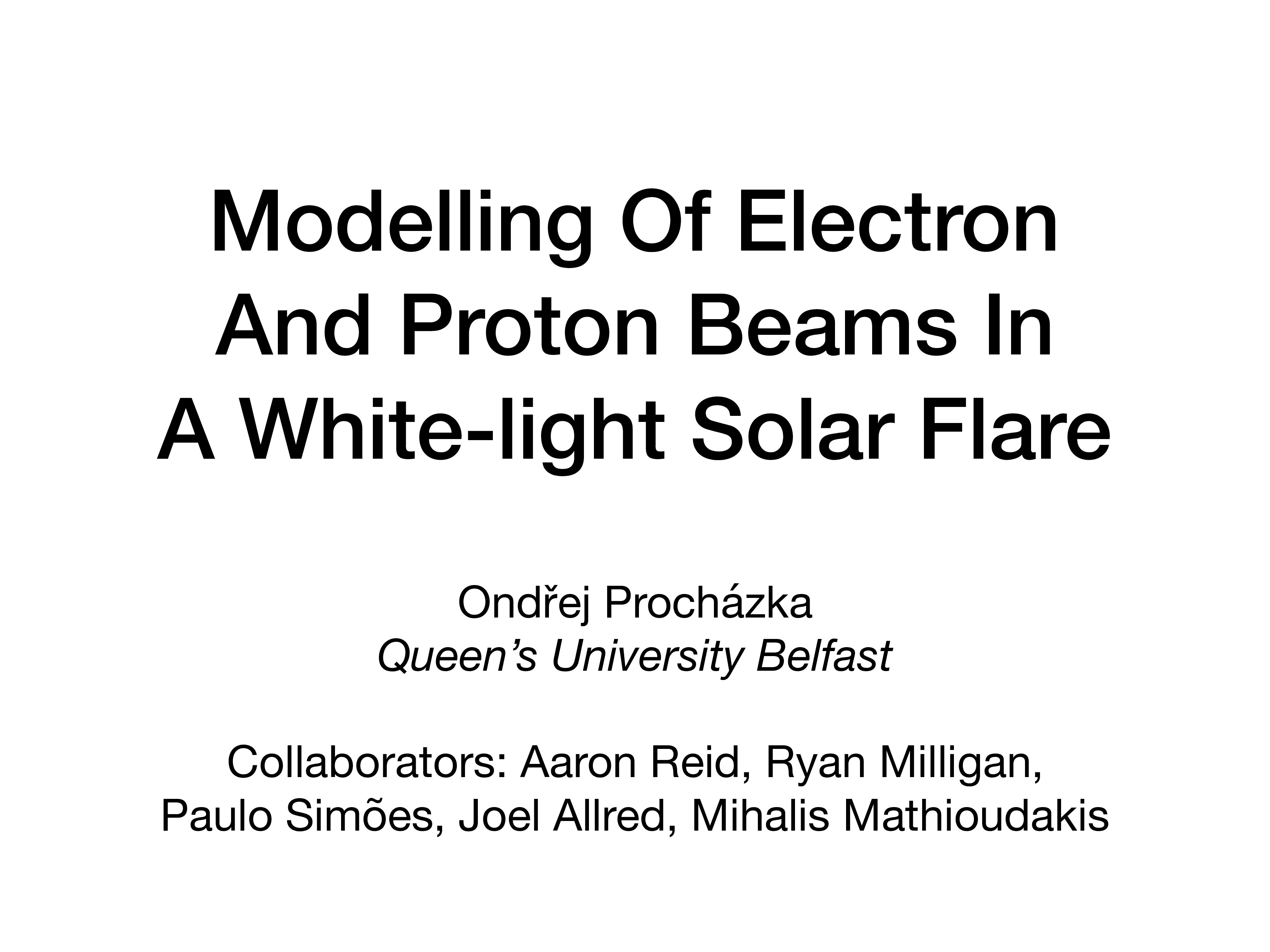Affiliation
Queen's University Belfast
Main category
Natural Sciences (Astrophysics and Astrononmy)
Abstract
Observations of an X1 white-light solar flare on 11 July 2014 showed an extraordinarily weak emission in hydrogen lines, extremely hard X-ray spectrum and indications for proton beams. We have used the radiative hydrodynamic code RADYN to model the response of the solar atmosphere with a grid of models that was based on electron and proton beam parameters that may be most appropriate for this type of event. We then use the radiative transfer code RH to synthesise line profiles from these atmospheres to compare to observations. We selected those models that agree best with the RHESSI/Fermi, ground-based spectra (350 – 440 nm) and HMI white-light continuum data. Our analysis shows that the observed atmospheric response could be reproduced with a relatively weak particle beam with a high low energy cut-off. We found that both electron and proton beams can generate the observed flare emission but it is easier for the protons to penetrate deeper into the atmosphere and deliver their energy in the lower chromosphere where the excess white-light continuum emission originates. Observations of such events with higher spatial resolution at shorter wavelengths would allow more accurately determine the flaring area and the nature of WL emission.
Do you have problems viewing the pdf-file? Download presentation
here
If the presentation contains inappropriate content, please
report the presentation. You will be redirected to the landing page.
